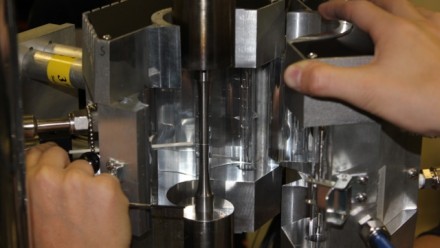Synchrotron X-ray measurement techniques for cylindrical samples under thermal gradients
This study displays the ability to monitor in situ, the response of the internal layers within a layered coating, while implementing a thermal gradient across the thickness of the coated sample. The thermal setup maintained coating surface temperatures in the range of operating conditions, while monitoring the substrate cooling, for a controlled thermal gradient. Read our paper here.
Abstract
Measurement techniques to obtain accurate in situ synchrotron strain measurements of thermal barrier coating systems (TBCs) applied to hollow cylindrical specimens are presented in this work. The Electron Beam Physical Vapor Deposition coated specimens with internal cooling were designed to achieve realistic temperature gradients over the TBC coated material such as that occurring in the turbine blades of aeroengines. Effects of the circular cross section on the x-ray diffraction (XRD) measurements in the various layers, including the thermally grown oxide, are investigated using high-energy synchrotron x-rays. Multiple approaches for beam penetration including collection, tangential, and normal to the layers, along with variations in collection parameters are compared for their ability to attain high-resolution XRD data from the internal layers. This study displays the ability to monitor in situ, the response of the internal layers within the TBC, while implementing a thermal gradient across the thickness of the coated sample. The thermal setup maintained coating surface temperatures in the range of operating conditions, while monitoring the substrate cooling, for a controlled thermal gradient. Through variation inmeasurement location and beam parameters, sufficient intensities are obtained from the internal layers which can be used for depth resolved strain measurements. Results are used to establish the various techniques for obtaining XRD measurements through multi-layered coating systems and their outcomes will pave the way towards goals in achieving realistic in situ testing of these coatings.

